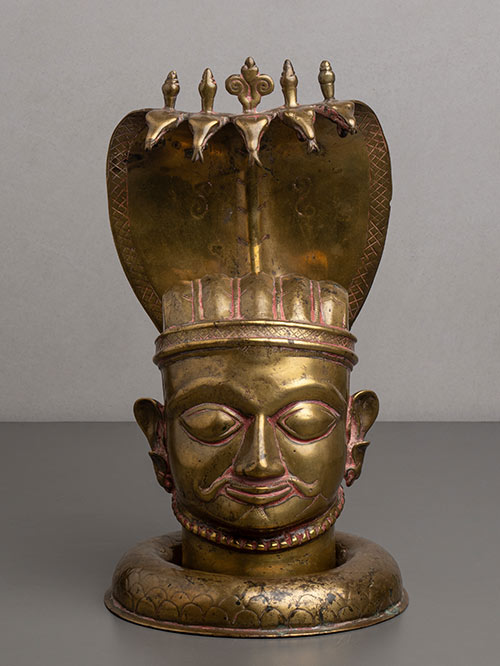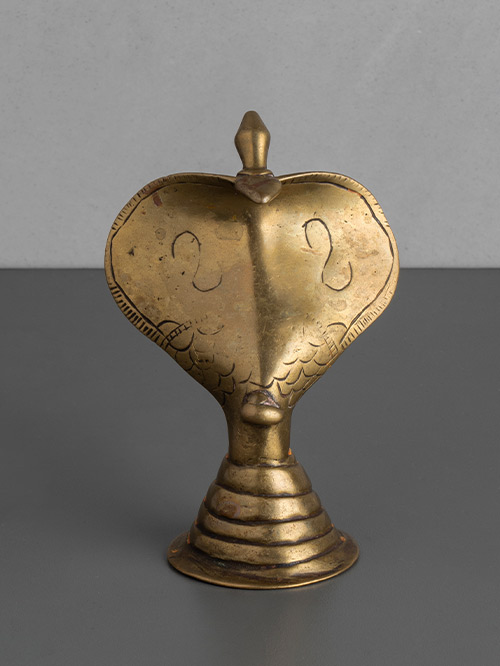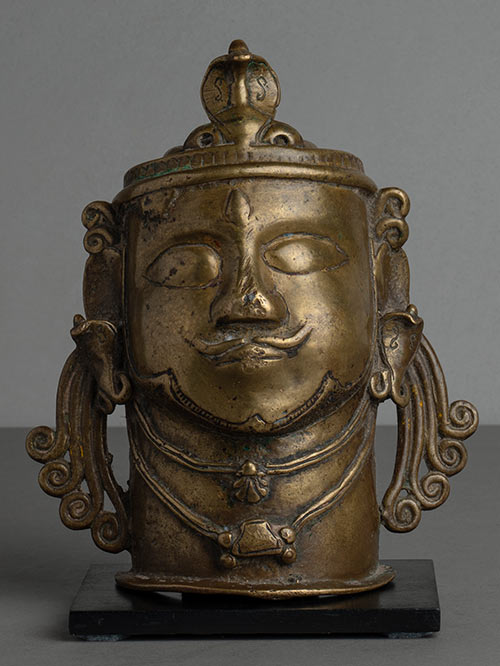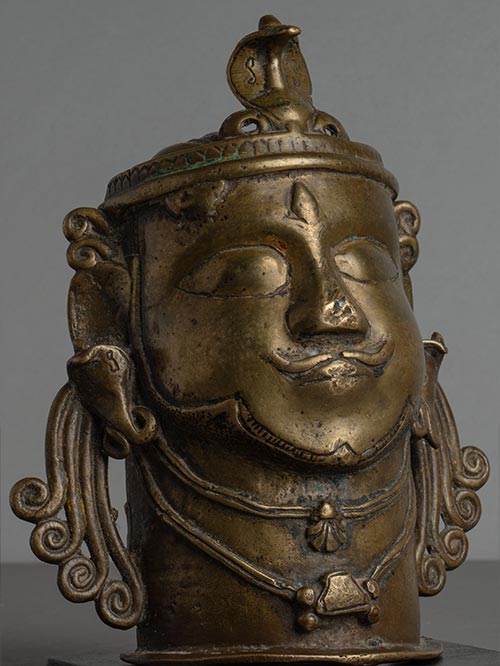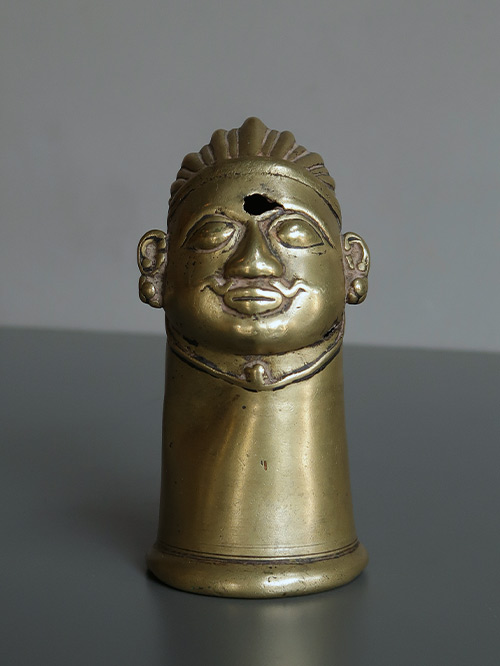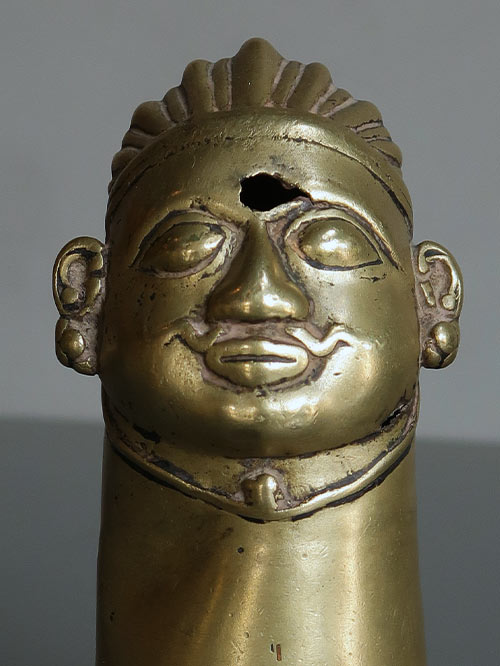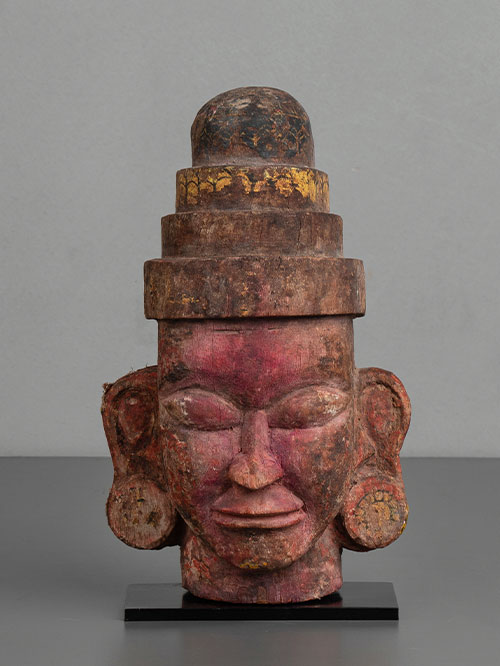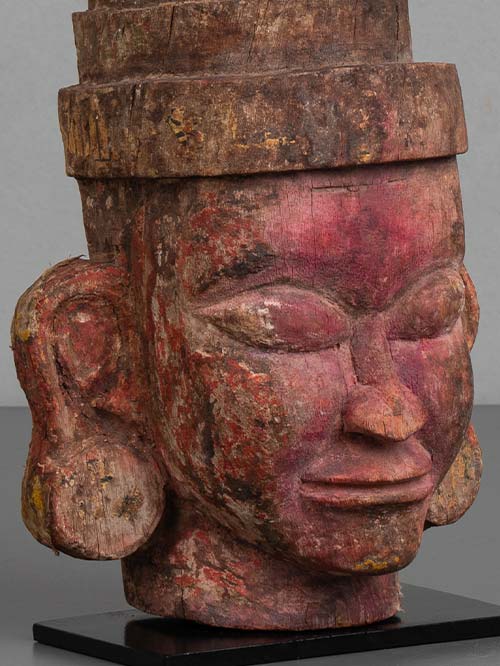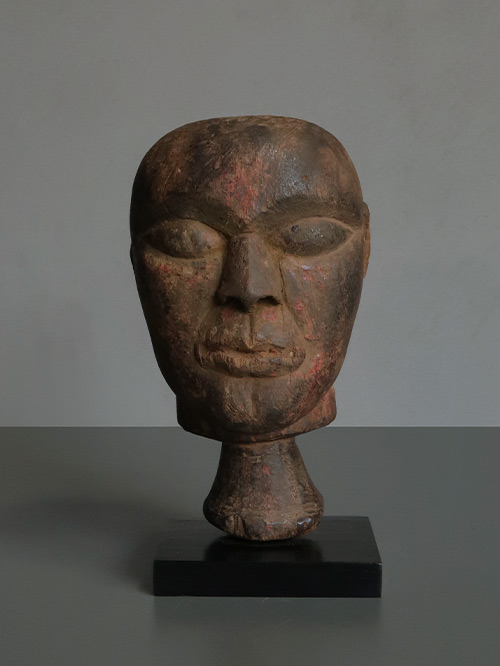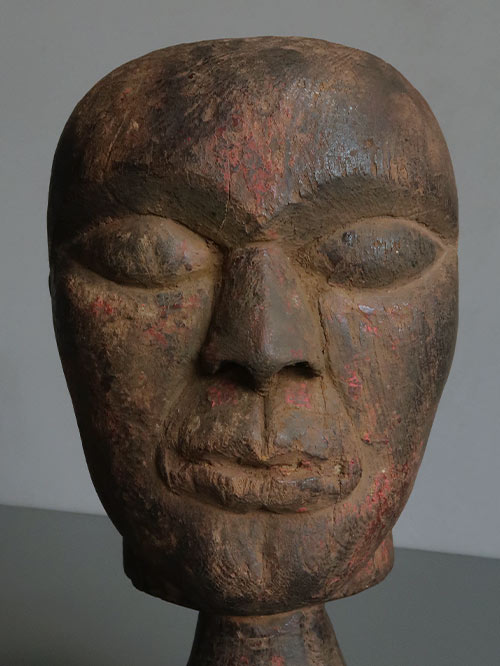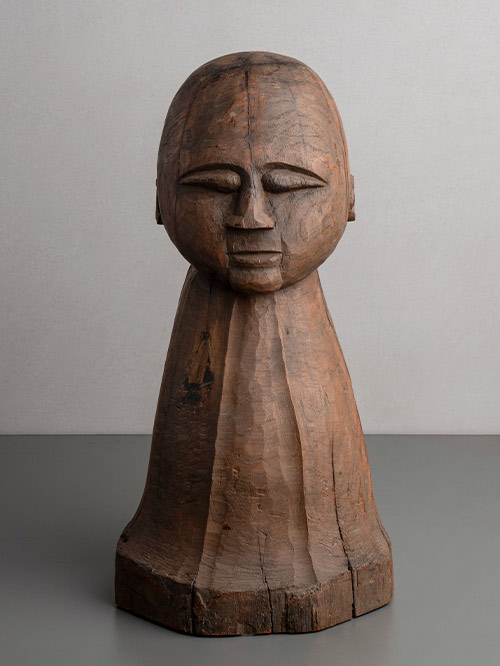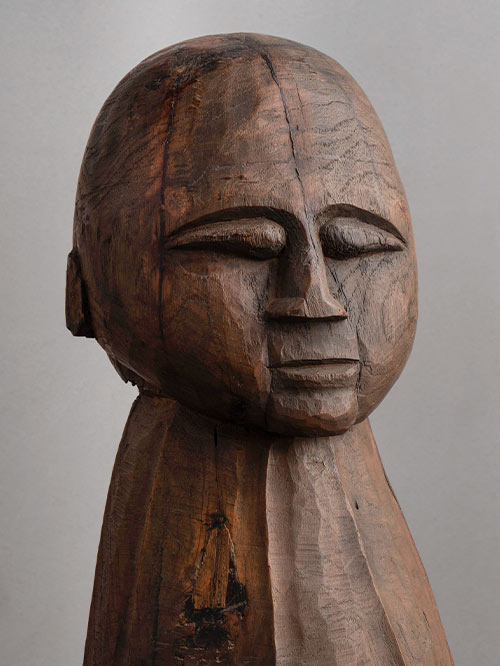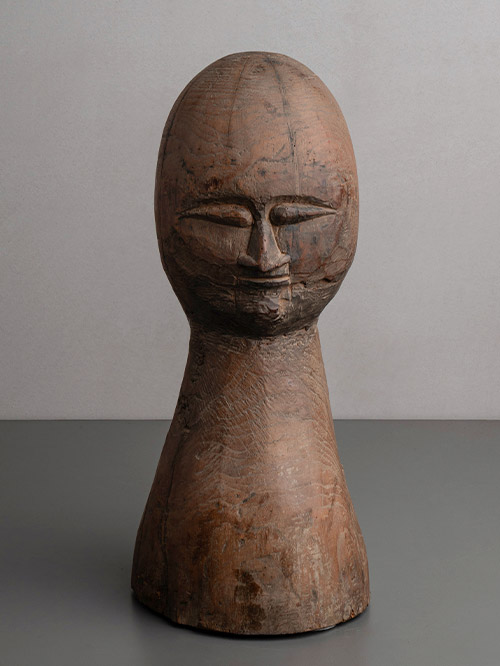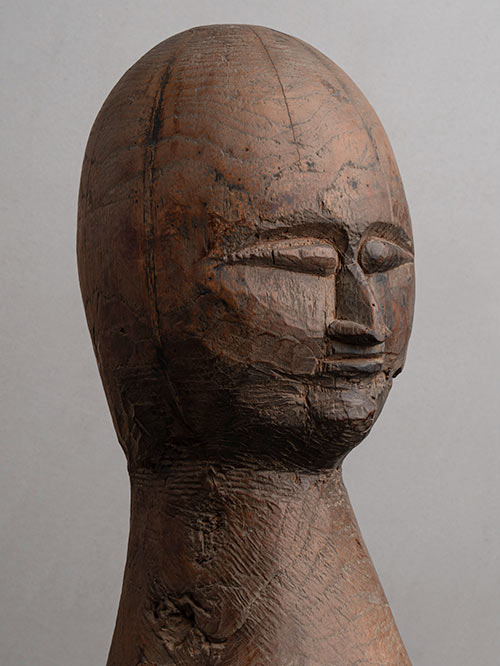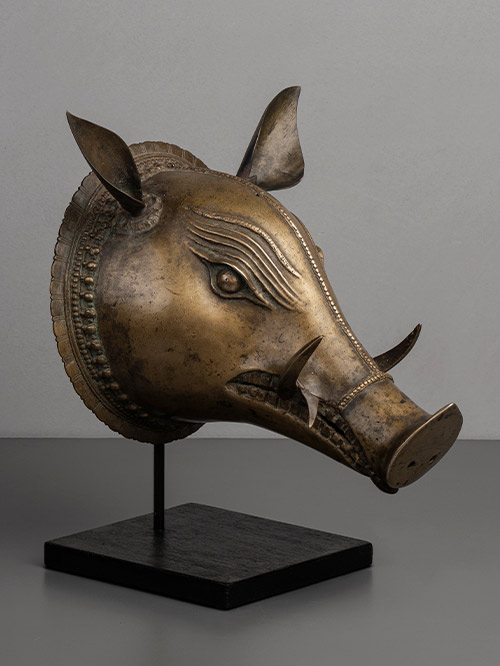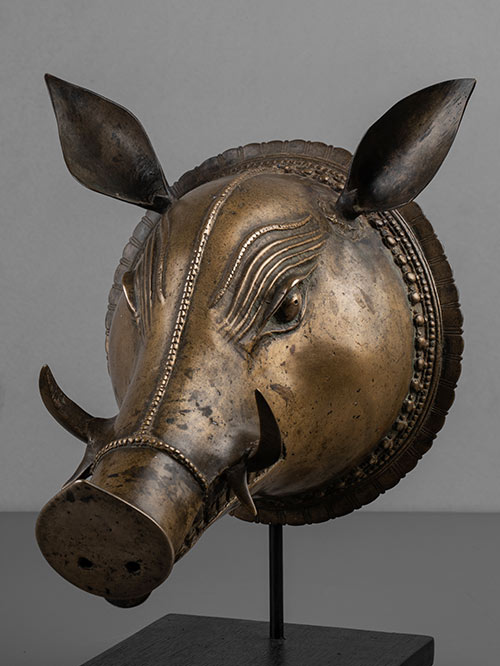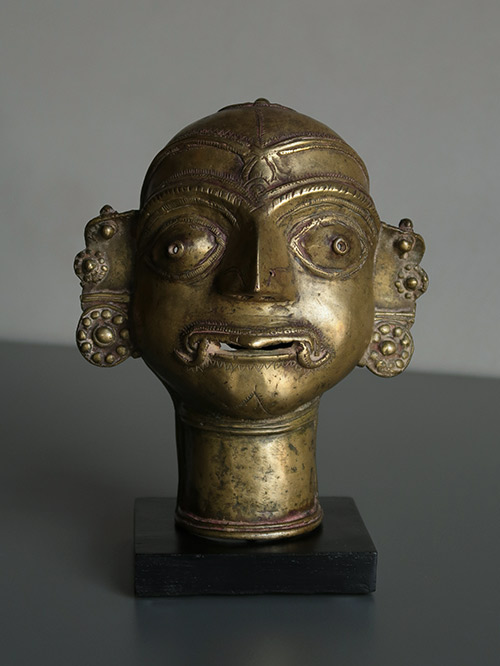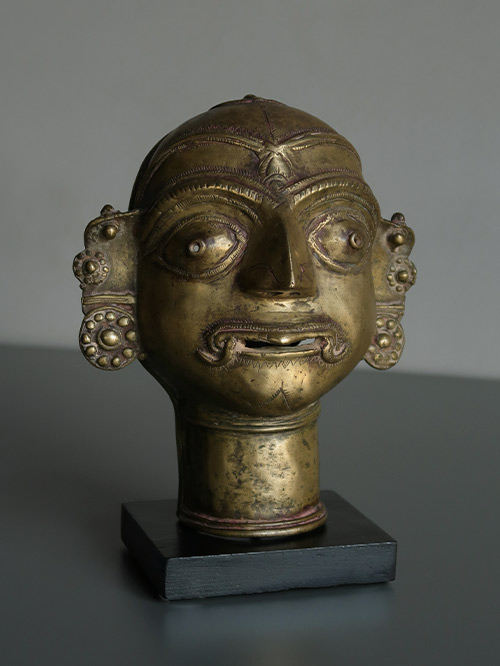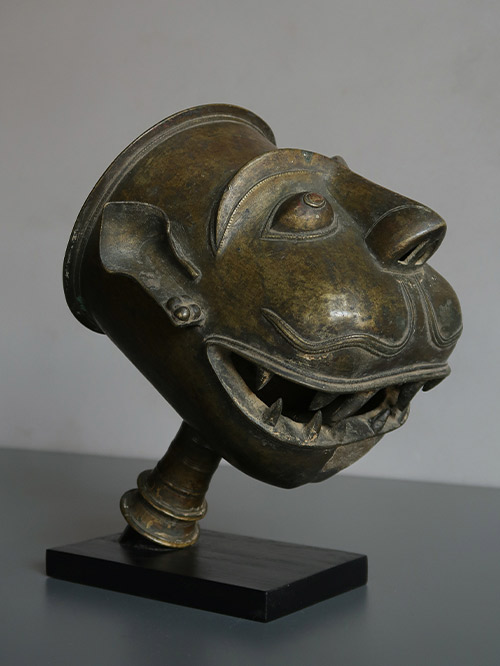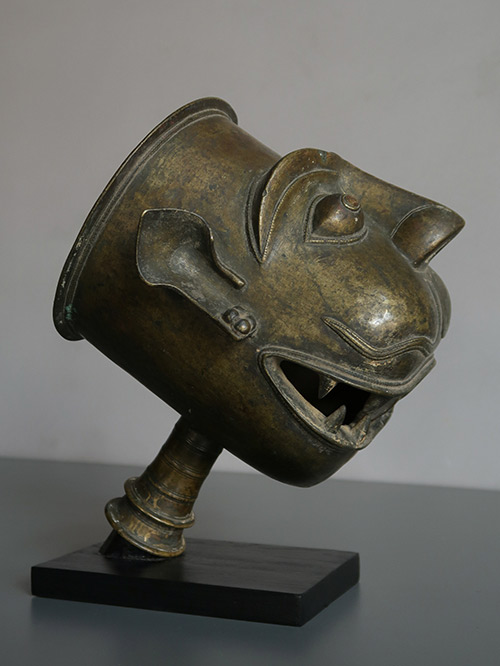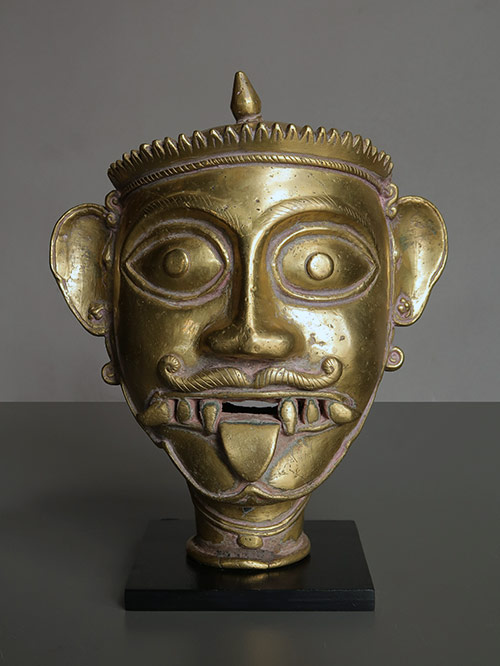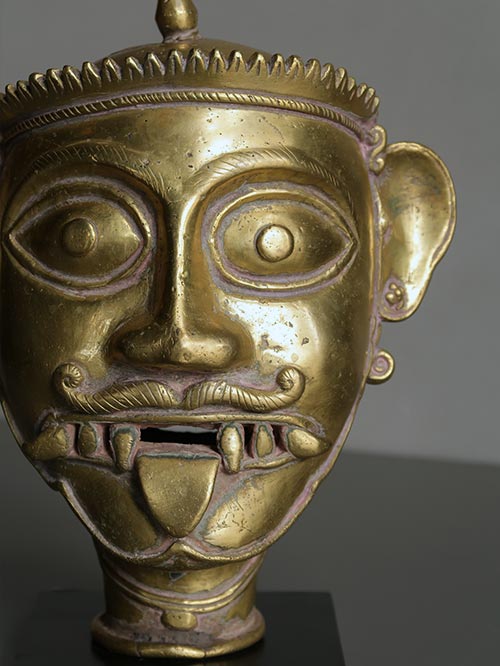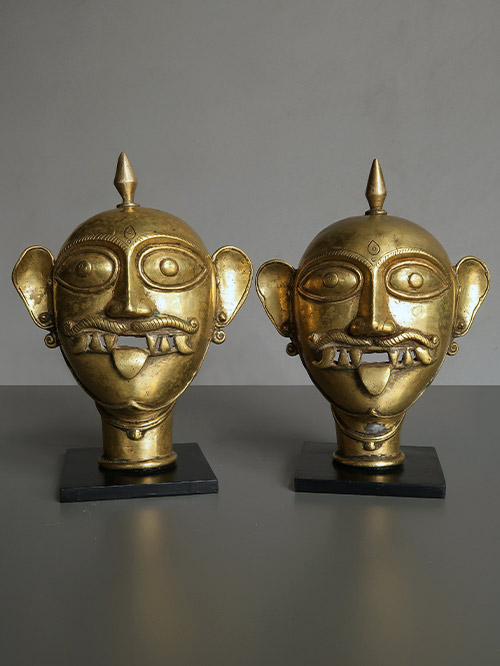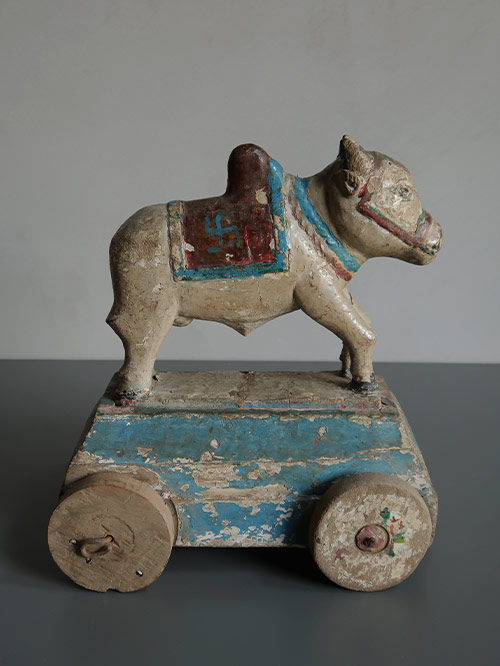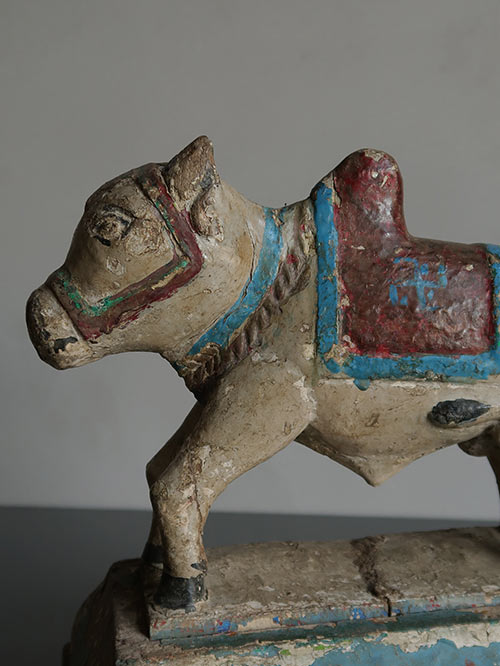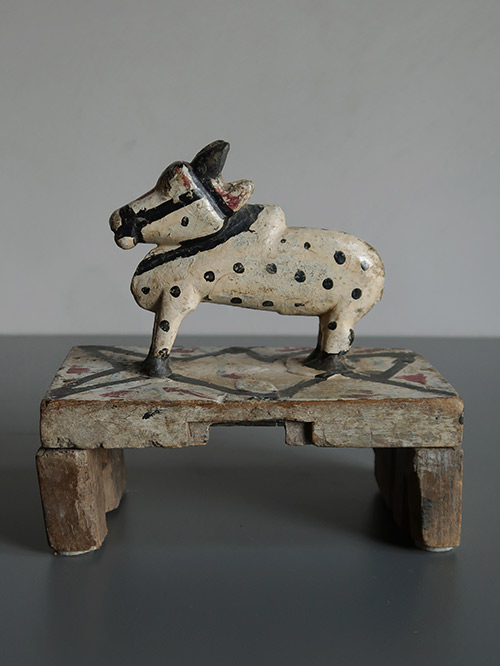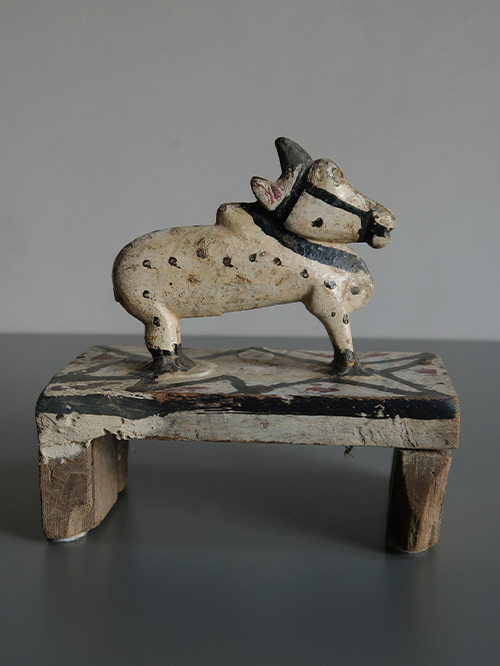Mukhalingam with Naga
Karnataka (South India)
brass
A finely cast and decorated Mukhalingam, – the moustachioed Shiva wears a simple turban, delicate naga (snake) earrings and a beaded necklace. His head rests on the patterned coils of the serpent Vasuki whose five-headed hood forms a canopy over his head.
Shiva is one of the three principal deities of Hinduism. He is labelled the ‘destroyer’ with the Trimurti, Hinduism’s trinity which includes Brahma and Vishnu. While sometimes depicted iconically, he is usually worshipped in the aniconic from of a lingam. The lingam is shaped like a pillar with a round top and can be made of stone, wood or metal. Mukha-linga signifies a visage or face on a metallic, cylindrical casting used to cover a stone lingam. The cover is thought to protect the viewer from the harm that could occur on visualization of the linga, especially one with eyes painted on its surface, which is believed to energize the figure. The metallic visage iconically depicts Shiva, wearing his characteristic moustache, earrings and matted hair.
Size (cms): 30.5(H) x 17(W) x 17(D)
Size (inches): 12(H) x 6.5(W) x 6.5(D)

